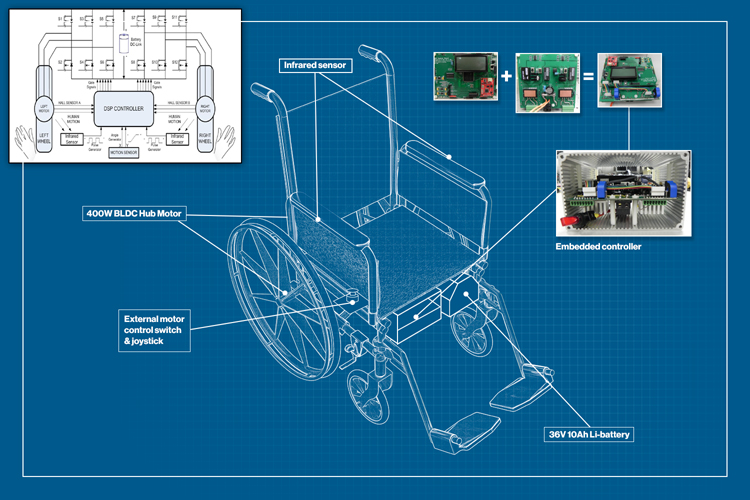This companion piece to the article “Citizen Scientists” in the current print edition of IIT Magazine provides greater detail about the futuristic wheelchair Mahesh Krishnamurthy, associate professor of electrical and computer engineering, and Eun-Jeong Lee, associate professor of psychology, are designing.

Conventional manual wheelchair
- Electric power boost
- Classic motor control plus system of sensors and individual wheel motors to adapt to driving conditions
- Commands from user and sensor feedback create power
- Brushless DC hub motor and Hall Effect sensor on each wheel measure speed and position to drive the motor
- Motion sensor detects uphill/downhill and left/right slopes
- Infrared sensors direct motion detection to recognize hand and arm movements
- Three-axis gyroscope responds to road conditions
- Accelerometer
- 36-volt, 10-amphere-hour lithium-ion battery
- The combination of sensors and gyroscope provide environmentally adaptive controls to automatically distribute torque to improve travel under certain conditions such as inclines.
- A “push and go strategy” controls motor speed while infrared sensors determine the user’s intended rate of speed (for example, when the user pushes the wheel, sensors determine how fast the user is trying to go and adjust the motor speed accordingly).
- Krishnamurthy says he learned during testing that some wheelchair users have arthritic fingers due to pushing buttons on the chairs. “Users had specific thoughts on where these features should be placed,” he says.
- From the user perspective, Krishnamurthy says, his psychology colleague Lee “looks at the stigma of using a certain technology to see how a user can be assimilated to it so his confidence doesn’t take a shot. We want to create a fair playing ground so that new technology can be easily implemented.”
- Citizen science savings: “Since we used wheels and batteries from electric bicycles, we built our prototype for $1,800, where anything commercially available ranges from $8,000–13,000. So the cost differential of engineered solutions versus invented solutions is big,” says Krishnamurthy.